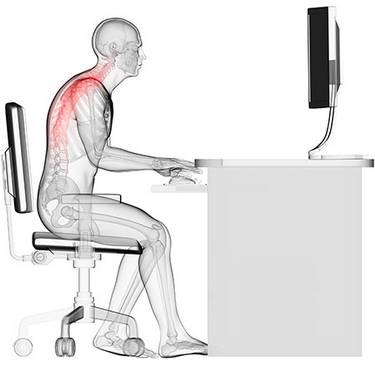Brain and muscular activity from a health perspective
“Technologies that have been developed over the past decade have allowed us to gain a closer insight into regional brain circulation and regional brain metabolism as well as neurotransmitter behaviour during physical activity. This required us to revise some of our traditional viewpoints, such as the belief that it was not possible to influence regional blood circulation in the brain through muscular activity and the inalterability of brain metabolism. The relationships between the skeletal muscles and selective brain regions in connection with physical activity are incredibly diverse. Based on experimental research on chimpanzees and the logical application of adaptation processes in connection with training, we can assume that, particularly in elderly people, it is possible to counteract the age-related loss of dendrites, synaptic hypotrophy and the loss of spines using appropriate muscle activity. The latter also has consequences for short-term memory, for example. The combination of targeted muscle activity with mental training should be ideal in preventing the premature decrease in brain performance during the aging process. We were also able to prove close links between muscle activity and well-being. In addition to the release of endogenous opioid peptides (such as endorphins), biochemical processes unspecified here also play a role in connection with muscle activity for creating the well-known improvement in mood that comes from exercise. In summary, we must note that contraindications and possible dangers that cannot be explored here should also to be considered.”
Prof. mult. Dr med. Dr. h.c. Wildor Hollmann, Institute of Cardiology and Sports Medicine, German Sport University Cologne

Movement to prevent the breakdown of cells in the brain

Sport can protect against cancer

Regular exercise helps prevent coronary heart diseases

Exercise improves mental capacity


Daily walks protect against Alzheimer’s disease and dementia

Movement in old age – Faster response times

A study conducted in early 2004 by the Beckman Institute at the University of Illinois proved that people who are physically fit have significantly shorter response times, can concentrate better and make fewer mistakes. In a nutshell, jogging is good brain-training, regardless of age.
The American research team examined the physical fitness of a group of people aged between 55 to 79. Participants also completed a test in which they were confronted with a row of symbols and required to quickly identify and assign the middle symbol in the row. A second study saw participants complete a six-month aerobic programme. Afterwards, they were examined for changes in their physical and mental capacities. After three hours of aerobics every week for six months, even the brain capacity of previously lazy participants had significantly improved.
With all of this in mind, we must remember not to overdo it when it comes to exercise. Unlike well-balanced physical exercise, too much strenuous exercise can result in the degeneration of dendrites in the long term. Dendrites are extensions of nerve cells and transfer signals from one cell to another. Experiments with rats have allowed researchers to observe that too much physical activity in the brain causes hippocampal degeneration (including the organisation of long-term memory).
People who exercise regularly have a better immune system, stronger cardiovascular functions and stable blood pressure. You do not have to be a top athlete in order to achieve this. Taking regular walks at a slightly faster pace or taking the stairs more often increase brain circulation by around 20 per cent. This significantly improves the supply of oxygen to the brain, and brain cells can perform better.
Source:
Stanley J. Colcombe, Arthur F. Kramer, Kirk I. Erickson, Paige Scalf, Edward McAuley, Neal J. Cohen, Andrew Webb, Gerry J. Jerome, David X. Marquez, and Steriani Elavsky: ‘Cardiovascular fitness, cortical plasticity, and aging’, In: Proceedings of the National Academy of Sciences (PNAS) 2004 101: 3316-3321.
Quotes

“Cardiovascular exercise is the best way to keep your brain young.”
Dr Donald Stuss, Neuropsychologist and Head of the Rotman Research Institute at the Baycrest Centre for Geriatric Care in Toronto, Canada

“I suggest a combination of cardiovascular and strength training. People who do both get the best results in the studies.”
Prof. Dr Mark McDaniel, Psychologist at Washington University in St. Louis, Missouri, USA

“Physical activity slows down the biological aging process. For this reason, exercise is the best anti-aging treatment around. There are no other procedures, medications or medical practices that can slow down the aging process in a similar way.”
Prof. Dr Herbert Löllgen, Head of the Medical Clinic at Sana-Klinikum Remscheid GmbH and Vice President of The German Association for Sports Medicine and Prevention





